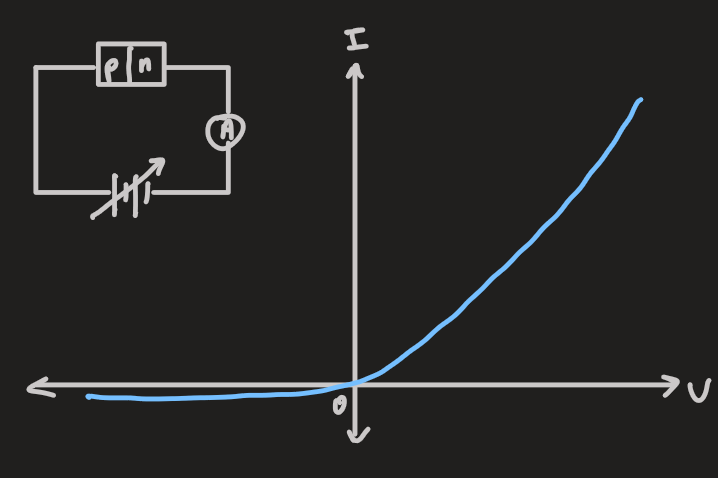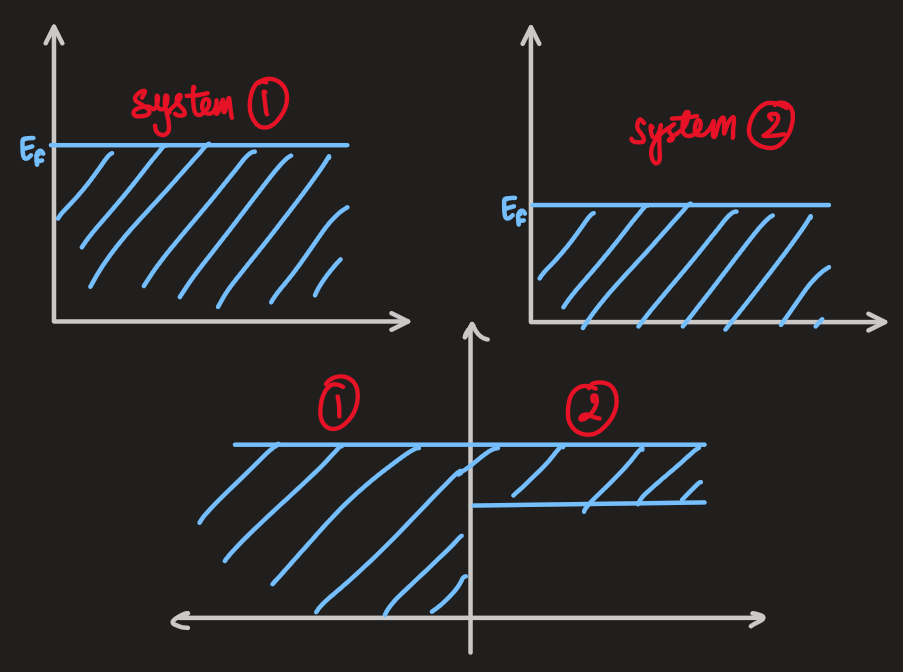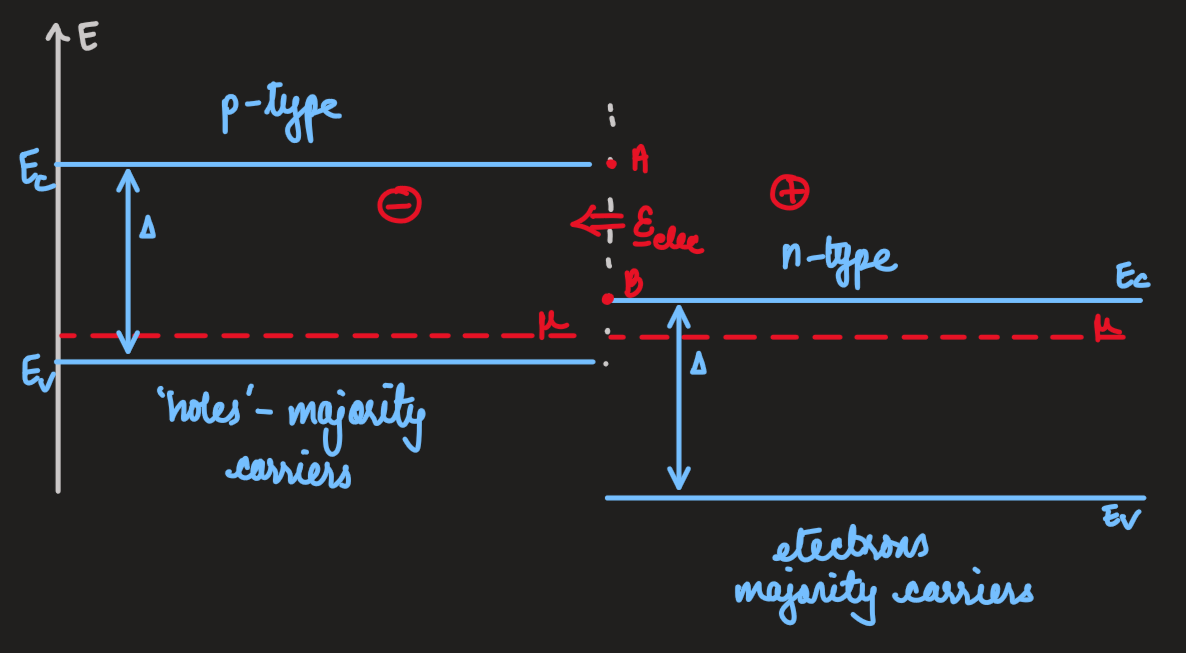PX262 - L3 - p-n junction
- it occurs at the boundary of one region doped with p-type impurities and another with n-type impurities
- the current flow is given by:
where,
- this acts as a one way device

- when two regions are in equilibrium, they must have the same chemical potential

- applying this to p-type semiconductor in contact with an n-type:

- in equilibrium, there is no net current through the junction, but carriers cross back and forth
- when first connected, the many holes in the p-region diffuse across the junction, into the n-region, where they can recombine with some of the many free electrons
- similarly, electrons diffuse from the n to the p-region
- this sets up an electric field,
- the potential energy associated with this field raises the energy levels in the p-region relative to those in the n-region so that the chemical potentials align
- the upward shift (AB)

- in equilibrium, there are four currents across the junction
- the diffusion processes lead to a recombination of holes and electrons:
and - at the same time, electron-hole pairs are generated by thermal excitation:
and - the electric field,
sweeps them out of the junction - at equilibrium, these currents balance:
-
note:
, ie. the probability of exciting a minority carrier in the p-region ( ) , ie. the probability of a majority carrier flowing from the n-region (hole), or, the probability that a majority carrier has enough energy to surmount the barrier, , where
-
applying a forward bias (positive potential difference) across the junction
-
the electric field,
, and the difference between the energy levels in the p-region and the n-region are reduced by:
- it becomes easier for the electrons in the n-type region to climb the potential barrier and diffuse into the p-region, and for the holes in the p-region to diffuse into the n-region
- both recombination currents
and are increased by: - the generation currents,
and , do not change - the net hole current:
- similarly, the net electron current:
- therefore, the total current:
where,
- therefore, this diode effectively allows current in the forward direction only
j